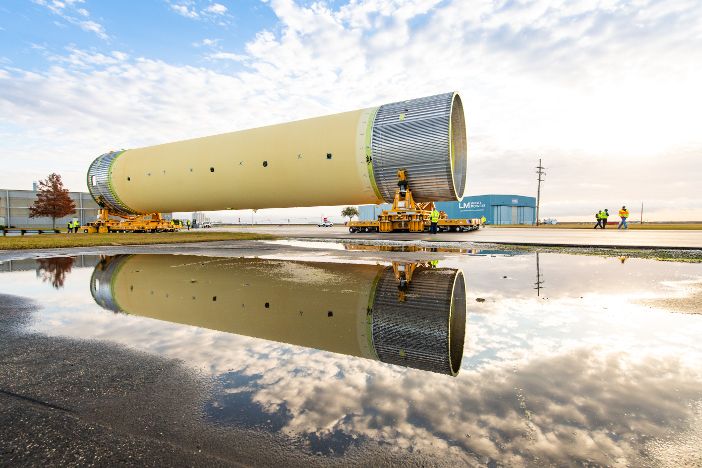The test version of the liquid hydrogen fuel tank for NASA’s massive rocket, the Space Launch System, is ready for structural testing.
The 149ft (45m) tall liquid hydrogen tank test article, which is the largest single piece of the rocket, has left the Michoud Assembly Facility in New Orleans for testing at the Marshall Space Center in Huntsville, Alabama.
At the Marshall Space Center it will be pushed and pulled using 38 hydraulic cylinders, each weighing from 500-3,300 lb (230-1,500kg) in Test Stand 4693, to subject it to the same stresses and loads it will endure during liftoff and flight.
During testing, the cylinders apply millions of newtons of pulling and crushing force and up to 1.5 million newtons of shearing or sideways force in different combinations against the test article, the test stand base and towers. During 30 or more test scenarios, instrumentation captures more than 3,500 strain and detection measurements, temperatures, pressures and high-definition images.
The test article is structurally identical to the flight version of the liquid hydrogen tank that will comprise two-thirds of the core stage and hold 537,000 gallons (240,000 litres) of liquid hydrogen cooled to minus 423 degrees Fahrenheit.
For an in-depth analysis of the test program for the Space Launch System, go here.





